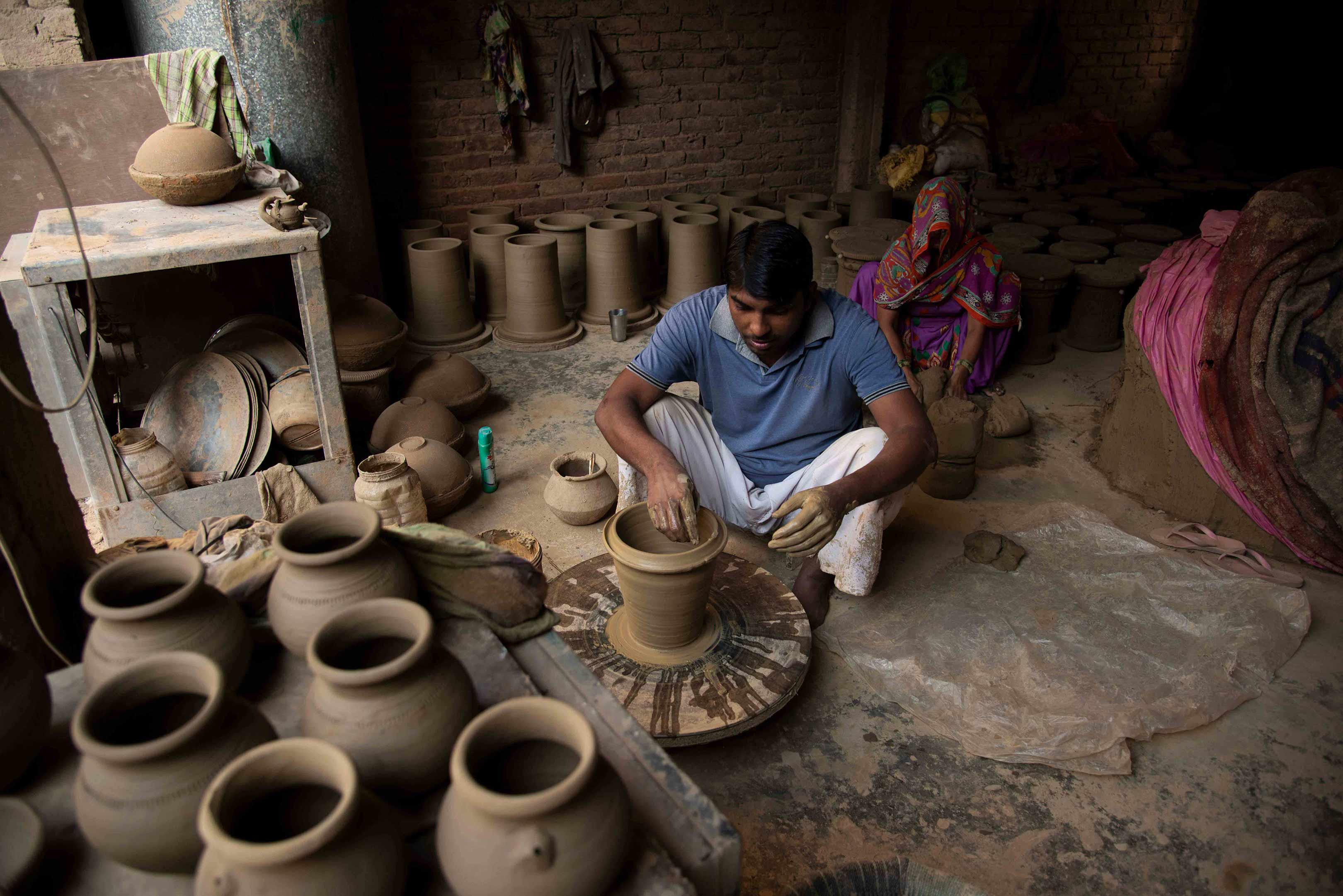PM Vishwakarma
October 29, 2024 2024-10-29 6:43PM Vishwakarma

PM Vishwakarma
Author: Shinjini Bigharia
MA Public Policy, 2024
Executive Summary
Launched on September 17, 2023, the PM Vishwakarma scheme has received much appreciation for enhancing the trade of traditional artisans and craftspeople, while also providing them with easy access to credit. However, key issues relating to the sustainability and long-term benefits of the scheme remain to be addressed.
Background and Context
PM Vishwakarma is a central-sector scheme, being implemented by the Ministry of Micro, Small and Medium Enterprises, along with the Ministry of Skill Development and Entrepreneurship and Ministry of Finance. The five-year scheme, with a corpus of Rs. 13,000 crores aim to uplift, through skill development and providing collateral-free loans, the artisan and craftspeople, engaged in 18 different trades. The primary aim is to preserve cultural heritage and traditional methods of livelihoods, while also integrating this community in the formal economy.
Key Features
- The 18 trades under this scheme encompass beneficiaries working as carpenters, boat makers, armourers, blacksmiths, hammer and tool kit makers, locksmiths, goldsmiths, potters, sculptors, stone breakers, cobblers, masons, weavers, traditional doll & toy makers, barbers, garland makers, washermen, tailors, and fishing-net makers.
- To register for this scheme, eligible artisans can go to their local common village service centres or apply online through the designated portal. Enrolled craftspeople will receive formal recognition, through a PM Vishwakarma certificate and identity card.
- Collateral-free loans can be availed in two tranches of Rs. 1 lakh and Rs. 2 lakhs, at a concessional rate of 5%.
- For every digital transaction, Re.1 will be credited to the beneficiary’s bank account through direct-benefit-transfers, to incentivise online transactions.
- Under the skill development initiative, a Rs. 500 stipends will be provided daily for attending basic training, and advanced training on voluntary basis will be available for self-employed artisans and traders.
- Grants for toolkits up to Rs. 15000 will be given to beneficiaries, in the form of e-vouchers to procure modern tools.
- Additional marketing support, by ensuring quality certification, branding and onboarding on e-commerce platforms and trade fairs will be extended to further formalise the artisanry industry.
- Attempts will be made to increase awareness about parallel government schemes such as PM Suraksha Bima Yojana, Atal Pension Yojana, etc.
Key Issues
In the one year that has passed since the announcement of the scheme, several issues stand unaddressed.
- Multidimensional Challenges: Despite the scheme’s noble intentions, it can only help craftspeople and artisans by easing the credit accessing process. A deeper understanding of the multi-dimensional challenges they face is required. Providing access to credit is treating a symptom, rather than addressing the cause.
- Access to New Markets: Traditional artisans suffer a lack of patronage for their products in the commercial marketplace. The scheme so far, has not provided viable evidence of opening new markets. Unchecked loans also run the risk of leaving the beneficiaries in debt if demand for their services is not increased.
- Modernising Trade: Many of these trades also have a caste character to them, and skill development without modernising the craftworks might leave them trapped in these low-paying livelihoods.
Recommendations
- Budgetary allocation: The Vishwakarma community in India is a highly heterogeneous but substantial community that is suffering from acute economic difficulties. The scheme’s budget, and its five-year outlay might not create a substantial impact given the size of this OBC community.
- Introduce Technology: Without focusing on modernising the goods and services provided by the artisans and craftspeople, it will become increasingly difficult for them to compete with the mass-produced, cheaper, and quality-checked products in marketplaces.
- Address Underlying Causes: Traditional handloom and handicraft sectors, despite their cultural importance, do not provide sufficient incomes. Root causes like lack of education and alternative employment opportunities need to be addressed, instead of only providing credit accessibility and skill development. Caste hierarchies will also be further perpetuated if access to modern technology is not increased.
The Government must focus on enhancing the quality of life of the artisan and craftsperson, and not simply furthering their debt.
Conclusion
The PM Vishwakarma scheme is a well-intentioned initiative aimed at formalising and mainstreaming the local artisanry sector. Sincere implementation, along with emphasis on modernisation and education can create significant long-term impacts for the artisans and craftsperson community.
References
- PM Vishwakarma, National Portal of India.
- What is PM Vishwakarma Yojana? The Mint, February 2024.
- How PM Vishwakarma scheme is creating a new India with skilled artisans and craftsmen, The Economic Times, September 2024
- Centre’s ‘Vishwakarma’ scheme will be opposed in T.N., says Veeramani, The Hindu, August 2023.
- Noble intentions: On the PM Vishwakarma scheme for traditional workers, The Hindu, August 2023.
- PM Vishwakarma 1 year report card: How Rs 13,000 crore scheme fared, Financial Express, September 2024.




